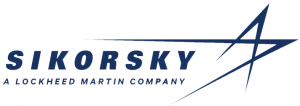ROI
App Chat
Free Report
Notes
Tips
FAQ
Videos
Case Studies
Laser Alignment
Laser Alignment Applications
What lasers are available for the Laser Microgage?
There are several standard lasers available for the Laser Microgage line and a variety of custom configurations. The most standard Laser Microgage has a rectangular housing with flat machined reference surfaces and variety of threaded mounting points for use on fixtures, tripods, and machinery. This configuration is available for the Laser Microgage 2D and 2000 lines. A round cylindrical laser is also available for bore alignment, spindle alignment, checking lathes and other mechanical alignment applications. In addition to these standard models, Pinpoint also provides lasers in customized housings for specific customer applications.
How much can I save by using a Laser System?
A lot. Many Pinpoint customers report significant savings of several tens of thousands of dollars or more on a monthly basis. The Laser Microgage lets you check your manufacturing equipment for errors and optimal performance and also provides feedback if you are re-aligning your equipment. Using a Laser Microgage means that you can diagnose alignment problems quickly and eliminates the delays and costs of waiting for an outside alignment team to show up. Contact Pinpoint for examples in your industry.
I have alignment needs but don’t need Laser Microgage precisions – what do I do?
Pinpoint offers a line of precision visual alignment lasers called the ProLine. This laser produces a bright, focused laser beam that produces a crisp bulls-eye pattern as it lands on a ruler, target or machinist’s scale. The kit includes attachments for setting level planes, squaring machinery and many other industrial applications. These lasers are available with a bulls-eye pattern, a sharp line, cross hairs, and other useful patterns.
Laser Microgage Features
How tough or durable is the Laser Microgage?
The Laser Microgage has no internal moving parts and is enclosed in a solid metal sealed housing with machined reference surfaces and a hard anodized coating. These lasers are designed to provide years of trouble free operation in demanding industrial environments – in fact, you can find Microgage lasers working deep in mines, at sea on ships and on a variety of demanding manufacturing floors. We do recommend that care be taken to avoid dropping the laser onto floors or subjecting it to hard direct impact which might potentially disturb the laser alignment.
What is the Laser Microgage range with the 90-Line?
A good rule of thumb is to use 100 foot beam path with the Laser Microgage 2D and an 80 foot path with the Laser Microgage 2000. This means that if your 90-Line is placed 60 feet away from the laser a Microgage 2D will let you measure to points out 40 feet out from the 90-Line.
What does “Bucking in” the Laser mean?
The laser reference beam from the Laser Microgage follows a straight path and may need to be aligned to a surface or a machine to be useful. This process is called “bucking in” the laser. If you are measuring the straightness of a long assembly, you would first need to identify two points on this assembly that are your reference datums. The laser is then “bucked in” so that the readings at these two datum locations are of the same value. Now you can measure along the assembly and your readings will be relative to a straight line (of laser light) through the two datum points on the assembly.
How high is the Laser above a surface?
The laser reference beam exits the laser transmitter housing a nominal 1 inch above the base of the laser housing.
What are the reflected laser spots that I sometimes see?
As the reference beam enters the front port of the Laser Microgage Receiver it passes through a filter that blocks the room light and sunlight from interfering with the measurement. The filter has several internal layers and these often cast small reflections back towards the laser transmitter. These reflections can be helpful in squaring the Laser Microgage receiver with the laser transmitter and other accessories. Simply rotate the Laser Microgage receiver until the small reflected laser spots fall back onto the front face of the laser transmitter.
How can the Laser Microgage make precise measurements with a large beam?
Pinpoint’s Laser Microgage receivers look for patterns in the laser beam for locating the centerline of the laser beam for high precision measuring and alignments. The laser beam looks large to the human eye but has been carefully optimized for electronic detectors.
Bore Alignment
Can bores be aligned with the Laser Microgage system?
Yes, the Laser Microgage can be used to align bores and is easily adapted to many of these applications. In some instances, the laser is fitted right into the bore providing a centerline for alignment and in other cases the laser may be situated outside the bore, on a mount or tripod, and the beam projected through a series of bores for centerline, parallelism and other alignments.
Can the Laser Microgage align bores on a common centerline?
Yes, the Laser Microgage is easily set up to send the laser reference beam through a bore tube or a series of bores to establish a common centerline. The Laser Microgage receiver, with interchangeable mounts, is then placed at each bore location to precisely measure that bore’s relative position to the laser centerline. The Laser Microgage can also be used to guide the bore assembly back into its correct position.
Does the Laser Microgage mount into a bore tube?
The Laser Microgage receiver has a mount designed specifically for bore tubes which centers the receiver in the bore. These mounts will place the receiver so that it can detect a laser reference beam exiting a tube or entering the tube. The Microgage Cylindrical Laser with a bore mount can also be placed into or referenced to a bore for alignment.
Can parallelism measurements be made between bores?
The Laser Microgage can measure the angular orientation of a bore to a common centerline. The Laser Microgage is set-up to define a common centerline and a pair of measurements (front and back) for each bore mount determine if the bore is parallel to the common centerline. The new Microgage 4D receiver or the Pinpoint Angle Prism are well suited to bore alignment applications when the length of the bore is very short.
What is the size of the Laser Microgage detector?
Pinpoint offers a variety of receiver/detector configurations. The standard Laser Microgage 2D Receiver is a 2 inch by 2 inch by 2 inch cube. The Laser Microgage 2D Transparent Receiver is 2 inches tall, 4 inches wide and 2 inches thick. The Laser Microgage 2000 standard receiver is 2.75 inches high and 1.25 inches wide and 2.5 inches thick. Pinpoint also has other receivers available for bore alignment as well as a variety of receiver designs for specialized applications.
Lathe Alignment
Can a lathe be aligned with a Laser Microgage?
The Laser Microgage 2D and also the Laser Microgage 2000 are easily used for lathe alignment. A special round laser is secured into the lathe chuck and a receiver placed on the tailstock, tool holder, or another part of the lathe to be checked. By turning the chuck and recording the Microgage readings the lathe can be checked for centerline, runout, parallelism and other alignment parameters.
Can a laser determine if the lathe chuck and tailstock are not centered?
Yes, a laser transmitter is placed into the chuck of the lathe and its laser reference beam is projected down the length of the lathe to a precision receiver on the tailstock. Through a quick series of measurements, turning the chuck and the receiver, the centerline position of the chuck and the tailstock can be precisely calculated.
How can we measure the straightness of a lathe bed?
A laser placed into the chuck provides a reference beam that is parallel to the axis of rotation for the chuck. A receiver placed onto a tool holder is then moved down the lathe bed and readings recorded. The Laser Microgage receiver provides precise measurement information on the X and Y axes of the lathe travel.
Will a laser work for aligning a large lathe?
Yes, Pinpoint measuring systems can measure and align lathes that are up to 60 feet in length.
Shaft Alignment
Can the Laser Microgage be used for shaft alignment?
Yes, the Laser Microgage 2000 or the 2D can be adapted for shaft alignment. The Laser Microgage is particularly well suited for shaft alignment over long distances such as with propeller shafts or shafts on large helicopters. Large diameter shafts such as those found in hydroelectric facilities and large pump stations are also easily aligned with the Laser Microgage.
What is Runout?
Runout is a measure of surface variation or movement that is not in the axis of motion for a given machine or piece of equipment. If a milling machine has a moving X axis that exhibits movement errors in the Y and Z directions these would be called Y axis and Z axis runout. If a spinning shaft does not spin symmetrically on its axis but instead shifts slightly during a rotation it is said to have runout.
Spindle Alignment
Can the Laser Microgage be used for spindle alignment?
Yes, as with lathe alignment, the laser is located on one spindle and the laser beam projects along the axis of rotation for that spindle. With a precise receiver, the axis of that spindle can be measured and checked relative to an opposing spindle or other parts of the machine.
Find your solution here
Not sure which laser alignment product is right for your job? Get expert advice. Take advantage of our engineers, contact us today.































